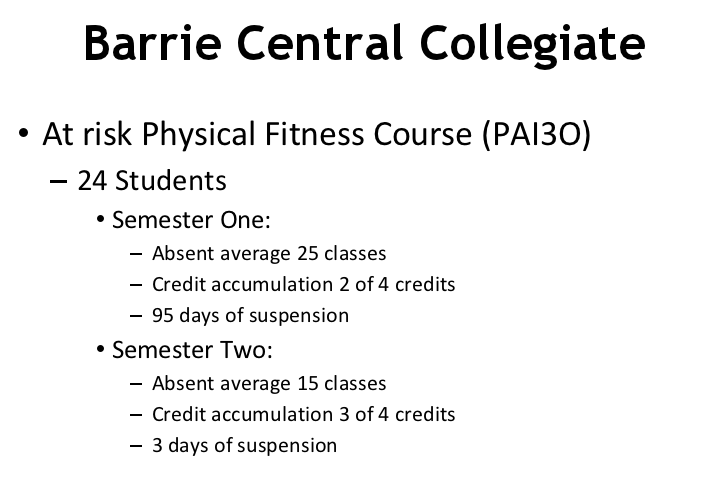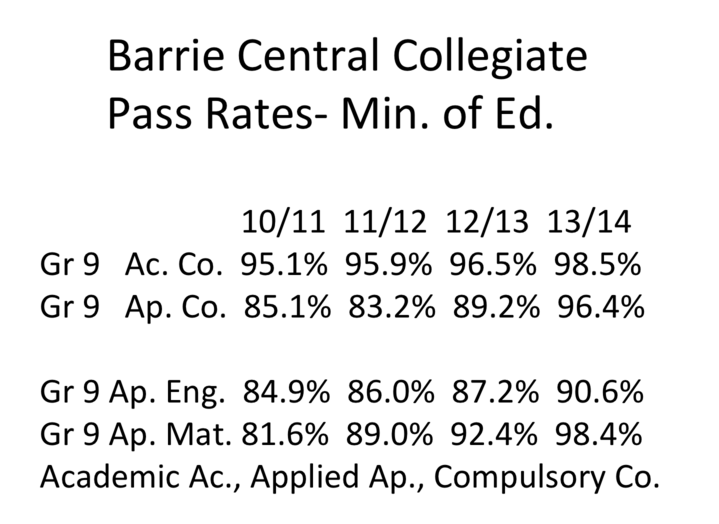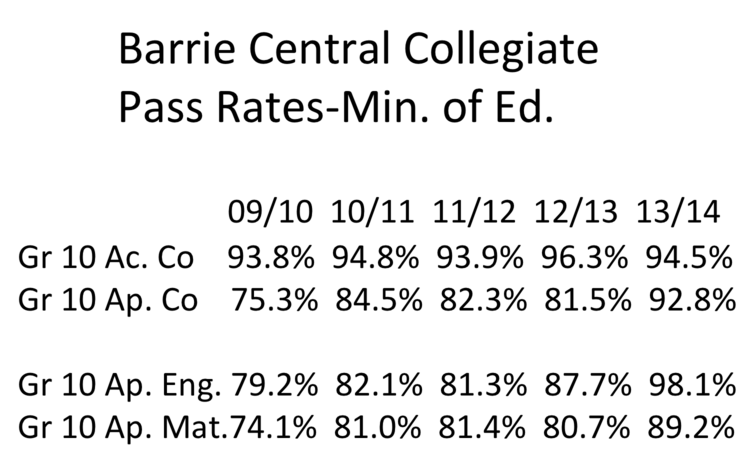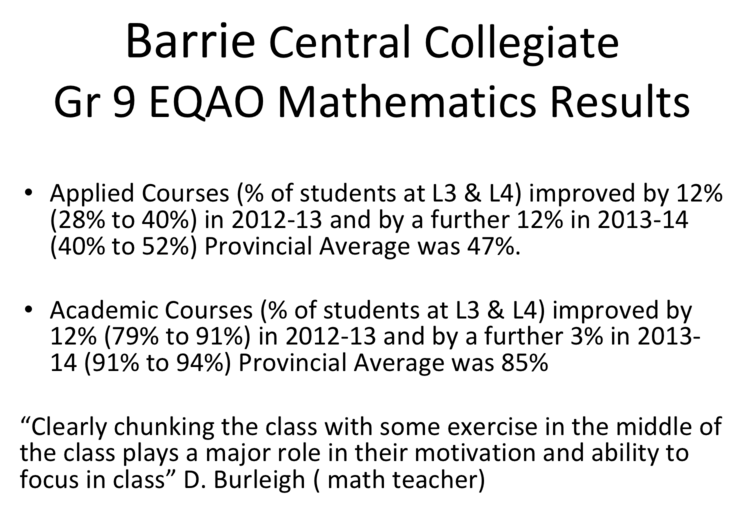Fitting Daily Physical Activity into School Culture
Physical Activity Improves Academic Performance at Barrie Central Collegiate
Our school’s interest in utilizing physical activity to improve academic performance began in 2010. Ron Andrews, Head of the Physical Education Department, and Peter Kalbfleisch, Head of the Co Curricular Program, introduced our staff to the book SPARK: The Revolutionary New Science of Exercise and the Brain, by Dr. John Ratey M.D. (Ratey, 2008). Our staff became convinced that the positive associations between physical activity and academic performance that had happened in other schools could happen in ours. We felt compelled to act.
Our school’s interest in utilizing physical activity to improve academic performance began in 2010. Ron Andrews, Head of the Physical Education Department, and Peter Kalbfleisch, Head of the Co Curricular Program, introduced our staff to the book SPARK: The Revolutionary New Science of Exercise and the Brain, by Dr. John Ratey M.D. (Ratey, 2008). Our staff became convinced that the positive associations between physical activity and academic performance that had happened in other schools could happen in ours. We felt compelled to act.
The problem, of course, was how would we integrate daily physical activity, for all students, into a regular school day, in a busy high school. We developed a number of ideas and decided to invite Dr. Ratey to come to our school to kick off our SPARK program. To our great delight he accepted, and brought four colleagues with him: Dr. Gilbert, Dr. Thornton and Dr. Shaw. They met with our students, staff and community and provided us with the scientific rationale for improving cognitive function through vigorous physical activity.
In the second semester of 2011 we began our first attempt at introducing daily physical activity into the curriculum. We created an at-risk physical fitness course for students who had experienced little academic success in the previous semester. The results greatly exceeded our expectations (see Figure1)!
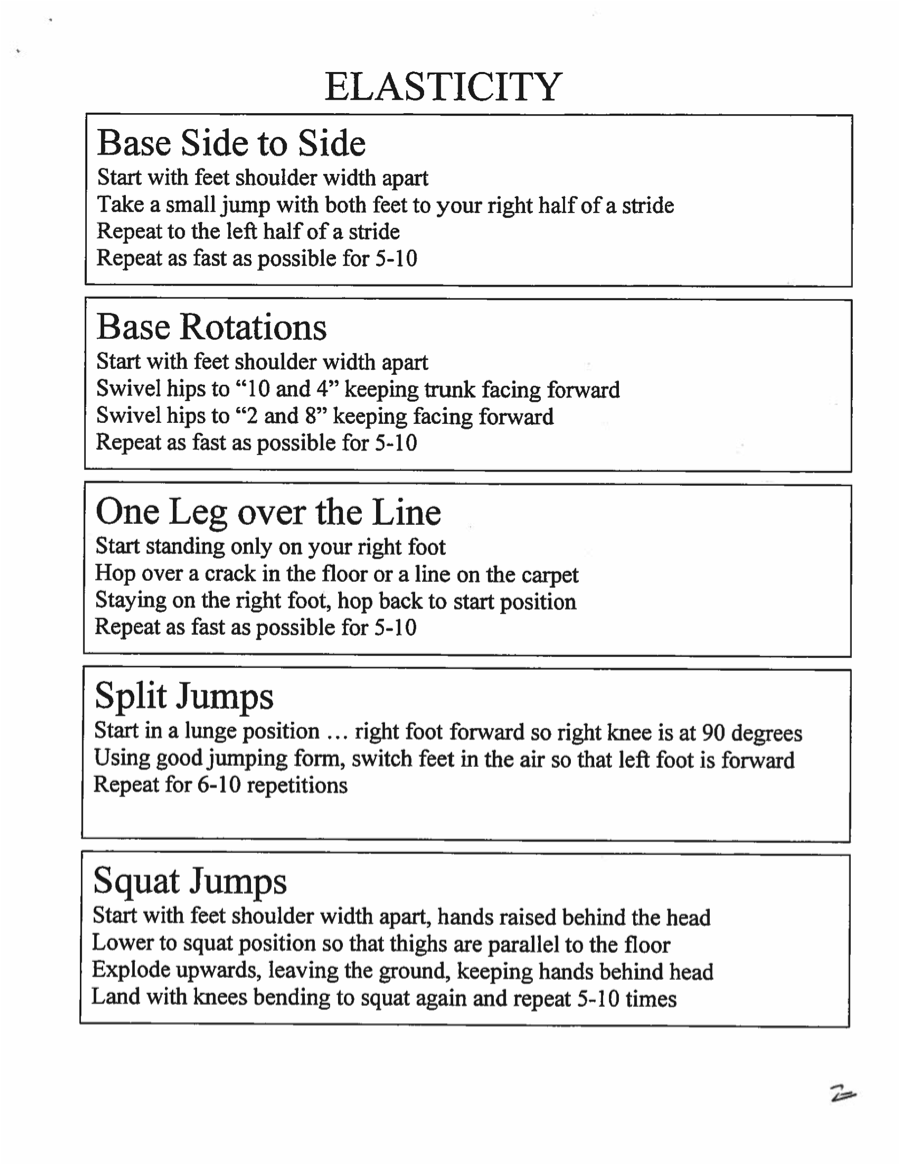
During the 2011-12 school year we developed, introduced and revised SPARK programming for all students, in all courses. The goal was that every student would receive at least 40 minutes of vigorous physical activity a day. We continue to revise the programming to this day. Essentially, the plan includes what happens in classrooms and what happens in the school. The key is that whatever we do should be fun and active.
Classroom-Based Physical Activities:
These are activities that teachers can use in their classroom or hallways. Every third classroom is equipped with a SPARK box. The box contains a host of inexpensive ‘toys’ and a list of activities to try (see below for a partial list). Typical ‘toys’ included skipping ropes (short and long), a cloth ladder, tennis balls, plastic cups etc.
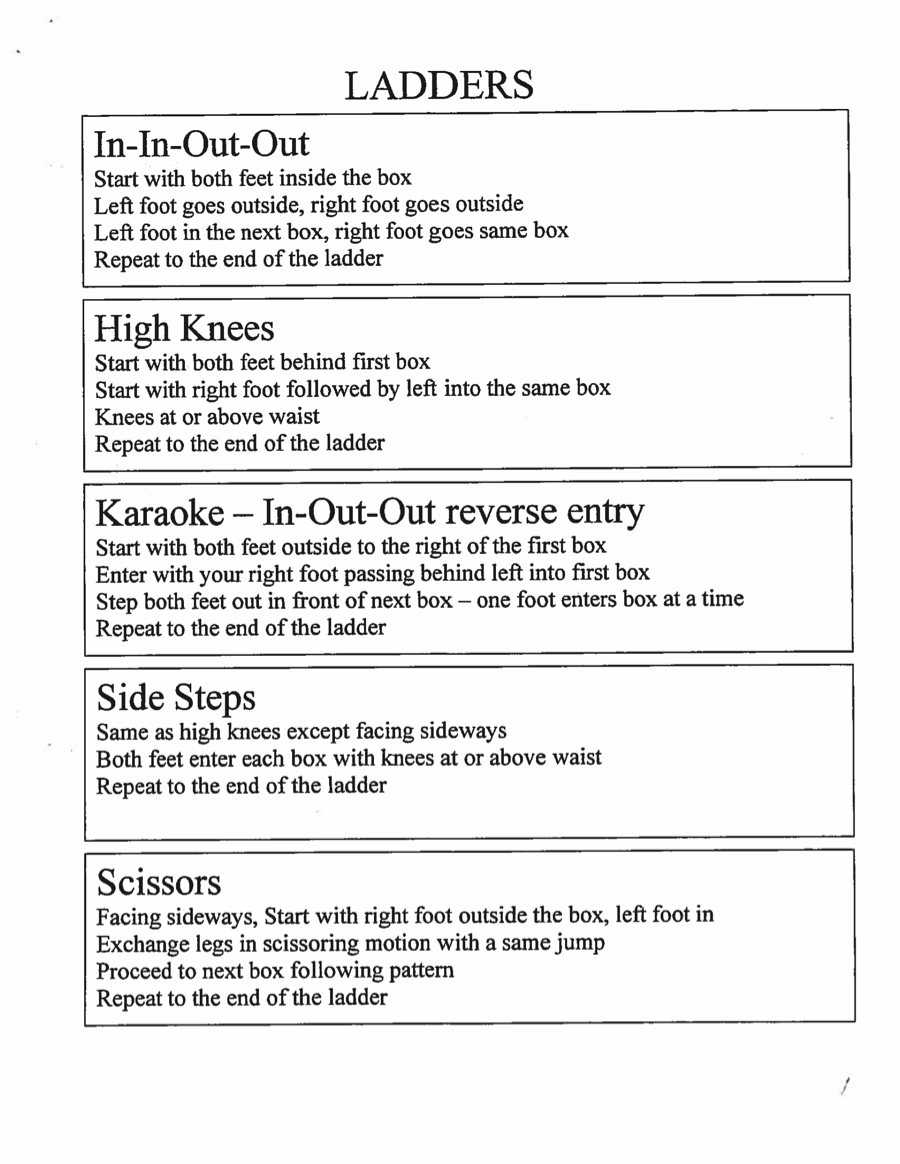
School-Based Physical Activities:
These activities include class-to-class, grade-specific, grade-to-grade and school-wide competitions. The Great Canadian Pedometer Challenge, a Dance, Dance, Dance Challenge, Wheels Wednesdays, Feet Fridays and No-Cut Sports Teams are examples of this approach.
One of the major concerns expressed by educators about SPARK programming is the loss of time spent on curriculum. The argument is that less time on curriculum will equate to lower grades. That has not been our experience (see Figures 2,3,4). Our academic (university-path) students have shown a small but steady improvement in their grades while benefitting from an overall improvement in physical health. Our applied (college-path) students have shown a remarkable improvement in their grades and their physical health! How great is that!
We encourage you and your students to get active! It’s fun, good for you, and will make you smarter! What’s not to like!
REFERENCE
Ratey, J. (2008) SPARK: The Revolutionary New Science of Exercise and the Brain / with Eric Hagerman. New York, N.Y. Little Brown and Company.
RESULTS DATA
